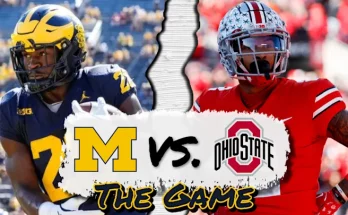Marreese Speights was an underrated piece of our Golden State Warriors’ championship runs, a player whose contributions often flew under the radar but proved vital to the team’s ultimate success. In an era dominated by superstars like Stephen Curry, Klay Thompson, and Draymond Green, Speights carved out a unique role that combined energy, scoring, and versatility, making him an invaluable asset for the Warriors during their historic rise. While he may not have been the first name fans shouted during the peak of Golden State’s dynasty, Speights embodied the kind of role player who does the dirty work, provides crucial spark off the bench, and keeps championship teams afloat when the stars need rest or run into trouble.
Speights, often affectionately known as “Mo Buckets” for his surprising scoring ability, entered the Warriors’ fold in 2013. Drafted originally by the Philadelphia 76ers in 2008, Speights had bounced around a few teams before finding a home in Golden State. His arrival coincided with the Warriors’ transformation from a promising playoff contender to an NBA powerhouse. From the moment he donned the blue and gold jersey, Speights embraced his role as a bench scorer and a physical presence in the paint. He was not the flashiest player on the floor, nor was he expected to take on the mantle of a franchise star. Instead, he offered a complementary skill set that meshed perfectly with the Warriors’ fast-paced, perimeter-oriented offense.
One of the most notable attributes of Speights was his ability to stretch the floor as a big man. Standing 6’10”, he was a traditional power forward/center in build, but his shooting range extended beyond the paint, allowing Golden State to space the floor in ways that were revolutionary for big men during that period. In a lineup that prioritized shooting and ball movement, Speights’ ability to hit mid-range and occasional three-point shots opened driving lanes for Curry and Thompson. This spacing was a crucial factor in the Warriors’ offensive schemes, where the defense had to respect multiple shooters at every turn. His shooting, combined with his size, made him a matchup nightmare for opponents who struggled to guard both inside and outside simultaneously.
Speights’ scoring ability was never in question. While he rarely posted starter minutes, his scoring bursts off the bench provided the Warriors with vital momentum shifts. Whether it was a quick four or five points in a critical quarter or a stretch where he knocked down consecutive shots, Speights showed a knack for heating up at the right times. His nickname, “Mo Buckets,” was earned through these moments of offensive prowess. For a team built around superstars, it’s easy to overlook the importance of a reliable bench scorer who can keep the scoreboard ticking and relieve pressure from the starters. Speights fit this mold perfectly, often stepping in to maintain or extend leads while the Warriors’ stars rested.
Beyond scoring, Speights was a physical force on the glass. His rebounding was aggressive and effective, often tipping the balance in close games. The Warriors’ style emphasized quick transitions and fast breaks, so securing defensive rebounds was a top priority. Speights consistently contributed in this department, grabbing crucial rebounds on both ends of the floor. His presence in the paint deterred opponents from easy second-chance points, and his hustle plays energized the team and the crowd alike. His ability to rebound and finish plays added a dimension to the Warriors that often goes unnoticed in highlight reels but was critical to their championship-level consistency.
Another underrated aspect of Speights’ game was his defensive contribution. While not a lockdown defender, he was more than willing to mix it up in the post and contest shots. His size and physicality allowed him to guard bigger players in the paint and occasionally switch onto smaller players during the Warriors’ switch-heavy defensive schemes. Speights may not have been the defensive anchor like Draymond Green, but he played his role with discipline and effort. This buy-in on defense was a key reason the Warriors could maintain their defensive intensity throughout games, even when their starters sat.
Speights’ impact was felt not just on the court but also in the locker room. Known for his positive attitude and team-first mentality, he was a player who embraced his role without complaint. This kind of attitude is invaluable on championship teams, where egos can clash and roles need to be clearly defined and respected. Speights’ professionalism and willingness to contribute wherever needed helped maintain the team’s chemistry, especially during high-pressure playoff runs. His presence was often cited by teammates and coaches as a calming, encouraging influence, someone who made the Warriors better simply by being a supportive teammate.
Looking back at the Warriors’ championship runs from 2015 through 2018, Speights’ role becomes even more apparent. While he was not always a regular fixture in the rotation during the later years—due to injuries and the arrival of other players—his contributions in the earlier stages of the Warriors’ rise were significant. In the 2014-15 season, the Warriors won their first championship in 40 years, and Speights was a key contributor off the bench. He provided reliable scoring, rebounding, and energy that helped the team secure tight wins in both the regular season and playoffs. In many ways, his presence gave the Warriors the depth necessary to survive long playoff series and wear down opponents.
During the 2015 NBA Finals against the Cleveland Cavaliers, Speights had several memorable moments, including his fearless play against elite defenders. He showcased his scoring touch and physicality, proving he could compete on the biggest stage. Although the Warriors’ success was largely attributed to their core superstars, role players like Speights were the unsung heroes who ensured the team functioned as a well-oiled machine. His ability to step up when called upon, especially in the playoffs, allowed Golden State to maintain a high level of performance even when key players needed rest or faced foul trouble.
Another memorable aspect of Speights’ time with the Warriors was his fiery personality and passionate play style. He was known to play with heart and enthusiasm, traits that resonated with fans and teammates alike. In moments of intense competition, Speights was not afraid to mix it up or stand up for his teammates. This emotional intensity often translated into impactful plays, whether through a powerful dunk, a crucial rebound, or a key defensive stop. The energy he brought to the court was infectious and contributed to the Warriors’ reputation as a team that played with joy and confidence.
In addition to his on-court contributions, Speights’ journey is a testament to perseverance and finding the right fit. Before joining the Warriors, he was somewhat of a journeyman, moving between teams and struggling to find a consistent role. Golden State’s system, culture, and coaching staff unlocked his potential and allowed him to thrive in a way he hadn’t elsewhere. This transformation highlights the importance of team context and fit in the NBA. A player who might be overlooked or underutilized on one team can become a vital contributor in the right environment. Speights’ success with the Warriors is a perfect example of this dynamic.
Speights also demonstrated versatility that coaches value immensely. While primarily a big man, he could step out to the perimeter and hit shots, rebound aggressively, and defend multiple positions. This flexibility allowed the Warriors to deploy various lineups without losing effectiveness. In a league increasingly favoring positionless basketball, Speights’ skill set was ahead of its time. His ability to adapt to different roles and situations gave Golden State an edge against teams with more rigid lineups. This adaptability was crucial during playoff series, where matchups can shift game to game and the ability to adjust quickly is paramount.
It is also worth noting that Speights’ impact extended beyond just statistics. Championship teams require role players who bring intangibles that do not always show up in box scores—things like leadership, mentorship, and presence. Speights embodied these qualities, often mentoring younger players and serving as a steadying influence. This kind of veteran presence is invaluable during grueling playoff runs where mental toughness is as important as physical skill. His role in maintaining team morale and focus during the ups and downs of a season was a quiet but essential factor in the Warriors’ sustained excellence.
In summary, Marreese Speights was an underrated but crucial piece of the Golden State Warriors’ championship puzzle. His scoring ability, rebounding, defensive effort, versatility, and team-first attitude provided the Warriors with the depth and balance needed to dominate the NBA landscape in the mid-2010s. While the spotlight often shone brightest on the Warriors’ superstar trio, Speights’ contributions deserve recognition for their role in creating a championship-winning culture. His journey from journeyman to key contributor underscores the importance of fit and role players in building dynasty teams. Fans and analysts alike would do well to remember the impact “Mo Buckets” had during one of the most exciting periods in NBA history. His underrated presence was a testament to the fact that championships are not won by stars alone, but by the collective effort of a team, including those willing to do the little things that lead to greatness.



